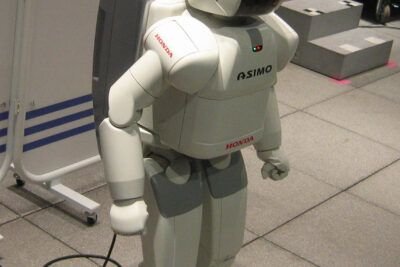
Is a Virus a Living Organism? Debunking the Debate on Viral Life

Viruses have long been a topic of fascination and controversy in the scientific community. While they possess some characteristics of living organisms, such as the ability to replicate and evolve, there is ongoing debate about whether they can be classified as living entities. This debate stems from the fact that viruses lack many essential features of life, such as the ability to carry out metabolic processes or to reproduce independently.
In this article, we will delve into the question of whether viruses should be considered living organisms or not. We will explore the characteristics of viruses, their mode of replication, and their impact on their host organisms. Additionally, we will examine the arguments put forth by scientists on both sides of the debate, and the implications of classifying viruses as living or non-living entities. By the end, readers will have a better understanding of the complex nature of viruses and the ongoing scientific discourse surrounding them.
Index
Can viruses reproduce and evolve like living organisms?
One of the biggest debates in the field of biology is whether viruses can be considered living organisms. While there is no definitive answer, scientists have been studying viruses for decades to understand their unique characteristics and behavior.
Viruses are small infectious agents that can only replicate inside the cells of living organisms. They consist of genetic material, either DNA or RNA, surrounded by a protein coat called a capsid. Unlike bacteria or other microorganisms, viruses cannot carry out metabolic processes or reproduce on their own.
However, viruses do possess some characteristics of living organisms. They can evolve and adapt to their environment through genetic mutations and natural selection. This ability to change and evolve is one of the reasons viruses are so adept at evading our immune systems and causing outbreaks of disease.
Another argument in favor of viruses being considered living organisms is their ability to hijack host cells and use their cellular machinery to replicate. Once inside a host cell, a virus will take over the cell's genetic machinery, forcing it to produce more virus particles. This process is similar to how living organisms reproduce, albeit with the help of a host.
On the other hand, viruses lack many key characteristics of living organisms. They are incapable of independent metabolism and cannot generate energy or carry out basic cellular functions. They also lack a cellular structure, which is a defining feature of all living organisms.
Additionally, viruses are considered obligate intracellular parasites, meaning they rely on a host cell to survive and reproduce. Without a host, viruses are inert and unable to carry out any biological processes.
Overall, the debate over whether viruses qualify as living organisms is complex and ongoing. While they possess some characteristics of living organisms, they also lack others. The fact that viruses cannot survive or reproduce without a host cell is a significant argument against their classification as living beings.
Scientists continue to study viruses to gain a deeper understanding of their biology and behavior. By unraveling the mysteries of viruses, we can develop better strategies for preventing and treating viral infections.
The Role of Viruses in Evolution
Viruses have played a significant role in shaping the course of evolution on our planet. Through their ability to transfer genetic material between organisms, viruses have contributed to the diversity and adaptation of life forms.
One example of how viruses have influenced evolution is through the process of horizontal gene transfer. This occurs when viruses infect a host cell and insert their genetic material into the host's genome. Over time, this integrated viral DNA can become a permanent part of the host's genetic code, leading to the expression of new traits.
Horizontal gene transfer has been observed in various organisms, including bacteria, plants, and even humans. Viruses have been instrumental in transferring genes that code for important functions, such as antibiotic resistance in bacteria or the ability to synthesize essential nutrients in plants.
Furthermore, viruses can drive natural selection by acting as selective pressure on host populations. Viruses that are more effective at infecting and reproducing within host cells have a higher chance of survival and spreading to new hosts. This constant interaction between viruses and their hosts can drive the evolution of both parties, leading to the emergence of new strains and species.
In summary, viruses have had a profound impact on the evolution of life on Earth. While they may not fit the traditional definition of a living organism, their ability to transfer genetic material and influence the traits of organisms makes them a fascinating subject of study.
What are the characteristics of life that viruses possess?

Viruses have long been a subject of debate in the scientific community regarding their classification as living organisms. While they possess some characteristics of life, such as the ability to evolve and reproduce, they lack others, such as the ability to carry out metabolic processes and respond to stimuli.
One of the key characteristics of life is the ability to reproduce, and viruses certainly possess this characteristic. They cannot reproduce on their own, but instead rely on host cells to replicate their genetic material and produce more virus particles. This process allows viruses to spread and infect other organisms.
Another characteristic of life that viruses exhibit is the ability to evolve. Like living organisms, viruses can undergo genetic mutations and natural selection, leading to the development of new strains and variants. This ability to adapt and change over time is essential for their survival and persistence.
However, viruses lack the ability to carry out metabolic processes, which is another defining characteristic of life. They do not possess the necessary cellular machinery to generate energy or synthesize their own proteins. Instead, viruses hijack the metabolic processes of host cells to fulfill their own needs.
Additionally, viruses do not have the ability to respond to stimuli. They cannot sense or react to changes in their environment, as they lack the necessary sensory organs and nervous system. Instead, viruses rely on chance encounters with suitable host cells to initiate infection.
In conclusion, while viruses possess some characteristics of life, such as the ability to evolve and reproduce, they lack others, such as metabolic processes and the ability to respond to stimuli. This ongoing debate highlights the unique nature of viruses and the challenges they present in our understanding of what it means to be a living organism.
Exploring the debate: why do some scientists consider viruses non-living?
There has been an ongoing debate among scientists regarding the classification of viruses as living organisms. While some argue that viruses should be considered non-living entities, others believe that they possess certain characteristics that make them living beings. To understand this debate, let's delve deeper into the reasons behind the non-living classification.
One of the main arguments against considering viruses as living organisms is their inability to carry out essential life processes on their own. Unlike cells, viruses cannot replicate or metabolize without the help of a host cell. They rely on the host cell's machinery to reproduce and perform necessary metabolic functions. This dependence on a host cell for their survival is one of the primary reasons why some scientists classify viruses as non-living.
Additionally, viruses lack the cellular structures commonly found in living organisms. They do not have organelles such as mitochondria or ribosomes, which are essential for cellular functions. Viruses are composed of genetic material (either DNA or RNA) enclosed in a protein coat, known as a capsid. This simple structure, devoid of cellular components, further supports the argument that viruses are not living organisms.
Furthermore, viruses do not exhibit characteristics commonly associated with life, such as growth and development. Unlike organisms that can grow and mature over time, viruses remain unchanged in size and complexity throughout their life cycle. They do not undergo any form of growth or development, further contributing to the non-living classification.
Despite these arguments, there are scientists who advocate for considering viruses as living beings. They highlight the fact that viruses exhibit certain characteristics of life, such as evolution. Viruses can evolve and adapt to their environments through genetic mutations, similar to living organisms. This ability to evolve and change over time suggests a certain level of life-like behavior.
Additionally, viruses possess the ability to infect and interact with host organisms. They have specific mechanisms to attach to host cells, inject their genetic material, and hijack the host's cellular machinery for their own replication. This level of interaction and manipulation of host cells is considered by some scientists as a defining characteristic of life.
In conclusion, the debate on whether viruses are living organisms or not continues to divide the scientific community. While viruses do not meet all the criteria traditionally associated with life, they exhibit certain characteristics that blur the line between living and non-living entities. Further research and understanding of viruses are necessary to reach a consensus on their classification.
Notable research findings:
Recent studies have revealed that some viruses can have a profound impact on the evolution of their host organisms. For example, certain viruses have been found to transfer genes between different species, leading to genetic diversity and potentially driving evolutionary changes. This discovery challenges the notion of viruses as mere non-living entities and highlights their potential role in shaping the evolution of life on Earth.
The role of viruses in the evolution of life on Earth
Viruses have long been a subject of debate among scientists regarding their classification as living organisms. While they share some characteristics with living organisms, such as the ability to evolve and reproduce, they lack certain key features that define life. This has led to the question: Is a virus a living being?
One argument against considering viruses as living beings is their inability to carry out essential life processes on their own. Unlike cells, viruses lack the necessary cellular machinery to produce energy, grow, or carry out metabolic functions. They are entirely dependent on host cells to replicate and carry out their life cycle.
However, viruses do exhibit some characteristics of life. They are capable of evolving through genetic mutations and natural selection, just like living organisms. Viruses also possess genetic material, either DNA or RNA, which allows them to pass on their genetic information to their offspring.
Another aspect that blurs the line between living and non-living entities is the ability of viruses to adapt to their environment. They can infect a wide range of hosts and evolve rapidly to evade the host's immune system. This adaptability and ability to cause disease have significant impacts on the evolution of life on Earth.
It is important to note that the debate over whether viruses are living beings is not simply an academic one. Understanding the nature of viruses has practical implications in fields such as medicine, molecular biology, and epidemiology. By studying viruses, scientists can develop strategies to combat viral infections and prevent outbreaks.
So, while viruses possess some characteristics of living beings, their inability to carry out essential life processes independently raises doubts about their classification as living organisms. Nevertheless, viruses play a crucial role in the evolution of life on Earth and continue to be a subject of fascination and study for scientists.
The complex nature of viruses
Viruses are incredibly diverse and can infect various types of organisms, including humans, animals, plants, and even bacteria. They come in different shapes and sizes, with some having a simple structure consisting of a protein coat and genetic material, while others have more complex structures with envelopes and additional proteins.
One fascinating aspect of viruses is their ability to hijack the cellular machinery of their host organisms. Once inside a host cell, viruses take control of the cell's resources and redirect them towards producing more viruses. This process often leads to damage or death of the host cell.
Viruses also have the ability to evolve rapidly and adapt to changing environments. Their high mutation rates allow them to generate genetic diversity, which can enhance their chances of survival and infecting new hosts. This adaptability is one of the reasons why viruses can pose significant challenges to medical treatments and vaccine development.
While viruses may not fit neatly into the traditional definition of a living organism, their complex nature and impact on the evolution of life on Earth cannot be denied. Whether they are considered living beings or not, viruses certainly play a significant role in shaping the world we live in.
 The Pros and Cons of Universal Basic Income: A Comprehensive Analysis
The Pros and Cons of Universal Basic Income: A Comprehensive Analysis In Defense of the Environment: Taking a Stand for a Sustainable Future
In Defense of the Environment: Taking a Stand for a Sustainable FutureSi leer artículos parecidos a Is a Virus a Living Organism? Debunking the Debate on Viral Life puedes ver la categoría Science and Technology.






Leave a Reply